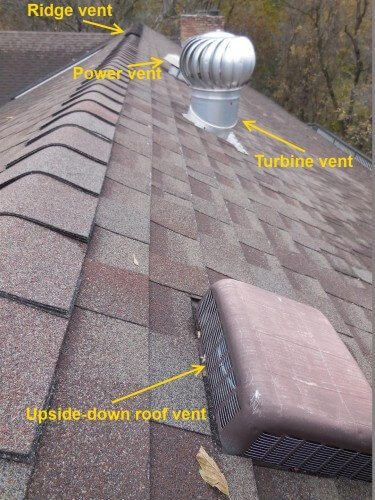The most common flat and low slope roof leaks occur at flashings and roof penetrations such as at plumbing vents chimneys and roof mounted air conditioners or heat pumps.
Roof ventilation slant issues.
Finally in wildfire zones floating embers can enter the vents and cause roof fires.
If your home has a flat roof then you will not benefit from the use of a roof ridge vent.
Advantages of proper roofing ventilation.
Slide the vent under the shingles so they cover the top half of the vent flange.
The lower half of the flange sits on top of the shingles.
Apply a bead of asphalt roof cement on the bottom of the vent.
Proper installation number and location of roof ventilation is needed to maximize the performance of a roof.
Soffit vents may leave air trapped at the top of your attic.
This video has examples of both static and ridg.
The shape of the roof impacts how much air comes through the system which means this vent must always be placed at the peak of the roof along your ridges.
In hurricane prone zones with frequent high wind events vented soffit collapse can pressurize a building which can cause windows to blow out and the roof to be blown off.
Nail the lower corners with roofing nails and tar the heads.
If any of these issues are of concern there is another option.
This product works best on homes with a slanted pitch to the roof but not too steep of course.
Most effective ventilation uses a ridge and soffit continuous ventilation system but even these designs can vary from roof to roof.
Although there are many different types of roof vents to choose from ensuring you have the right number of both.
Static roof line vents are effective for ventilation but generally aren t recommended due to issues with leaks.





























